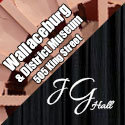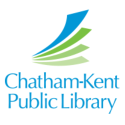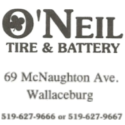By Dave Babbitt – Special to the Sydenham Current
I like to think of myself as “progressive” and attempt to not live in the past.
The root word “progress” suggests “moving forward”.
But because time never stops and is always moving forward, does that mean that every innovation is an example of progress?
Not in my mind.
I recall reading the forward in one of Jim Unger’s “Herman Treasury”, that the definition of right and wrong, “depends on where one gets off of the bus” and I look at progress in much the same way.
Allow me to apply this to music.
Prior to Thomas Edison’s invention of the phonograph in 1877, the only way to consume music was in a live performance situation.
As neither the ability to record and thereby preserve a musical performance, nor the ability to amplify music existed, it was imperative that architects design buildings with the finest acoustic properties for live performances, because that’s all there was.
If any reader has visited any of the finest concert halls in the world such as Carnegie Hall in New York, the Palau de la Música Catalana, in Barcelona, or the Musikverein in Vienna, you would be aware of their incredible acoustics and lack of amplification in a theatre that holds several thousand patrons.
Imagine Luciano Pavarotti standing centre stage in one of those venues with a full orchestra behind him and not requiring the assistance of a P.A. system to be heard.
The auditory experience is amazing!
Now think of your favourite artist today.
To see and hear your favourite artist, you will likely have paid hundreds of dollars for a decent seat yet be hundreds of feet away from the stage, and when they take to the stage, you will be bombarded with audio at immense (read: dangerous) sound pressure levels (measured in decibels)!
Modern day artists don’t fool me, however.
As an amateur “sound guy”, I know that a very cheap way to elicit an emotional response to music (especially high-energy pop music) is to pump it out at sound pressure levels that patrons can “feel”.
Not only is the music often too loud, but it is so incredibly processed that what patrons hear is not what is coming out of the artist’s mouth, let alone the instruments.
And where do most big pop stars perform?
Most likely in a hockey/basketball arena, or a massive outdoor sports stadium that is designed with maximum seating capacity, luxury boxes, and concession stands in mind, not acoustic properties.
In order to maximize revenue, the terrible acoustics and massive size of the venue are overcome using incredibly powerful sound systems, lighting systems (so you can pinpoint the artist you overpaid to see from hundreds of feet away) and of course nowadays, giant video screens to see your favourite artist up close because otherwise, they are merely a small dot on the stage.
These “concerts” have also become so much more.
Artists will appear from below the stage, lower from high above the stage, “fly” in from the rear or side of the stage, there will be amazing, choreographed dancers, light shows, pyrotechnics, and all manner of special effects that in the end have zero to do with their musicianship or voice.
Is this progress?
Can old-timers imagine the Glenn Miller Orchestra presenting any of this?
Even if they did, no one would be paying any attention because they would all be too busy dancing!
In some cases, what you are hearing in today’s concerts is not even live!
For example, a recent analysis video by Fil on his “Wings of Pegasus” YouTube channel exposed Don Henley of The Eagles using recorded vocals on recent Eagles concert performances of “Desperado” because he cannot reliably hit the high notes anymore.
In other words, Mr. Grumpy is a fake! (remember Milli Vanilli?)
Full disclosure: While I complain about these “mega concert experiences” I’ve attended many of these concerts myself, but they are rarely among my most fulfilling experiences.
I detest leaving a venue with my ears ringing, barely able to hear traffic noise on my way home because my hearing has been temporarily damaged (hopefully).
No, my favourite performances have been those I’ve experienced in smaller venues with great acoustic properties such as Gordon Lightfoot at Massey Hall, any orchestral performance I’ve ever attended, all the big bands I’ve experienced such as the Glenn Miller Orchestra, Count Basie, and Maynard Ferguson, chamber concerts, my lone experience at the Canadian National Opera, acapella music etc.
Several of my very best concert experiences were right here in Wallaceburg in John Gardiner’s living room when he presented his house concert series.
I experienced amazing musicians from as close as four feet away displaying superb musicianship and wonderful, unprocessed vocals.
While music comes in many preserved forms today, I absolutely love live performances.
Keep your cassette tapes, 8-tracks tapes, phonograph records (again), reel-to-reel tape machines, (am I showing my age?) CD collection, concert DVDs with your surround sound experience or nowadays, digital files.
I would much rather experience a live performance.
Always.
Most artists today cannot even reproduce their recorded music live without racks and racks of signal processing gear.
While I love attending live performances, my wife does not share my enthusiasm, because of the sound levels of modern-day concerts that I just mentioned.
I usually need to work hard to get her to come along.
She even finds playing in our Wallaceburg Concert Band to often be a rather overwhelming experience in terms of sound levels.
To quote the great trumpeter Wynton Marsalis, “music today is too loud. It’s almost violent”.
And now I come to Artificial Intelligence and its potential effect on the world of music.
Over 40 years ago I composed the lone song I’ve ever written.
I’ve mentioned it before.
It’s ridiculous.
The chord structure is simplistic, and the lyrics juvenile.
Several of us laugh and joke about it frequently.
Recently, my son Ryan asked for a copy of the lyrics.
He was playing around with a Beta version of some AI music software and in providing the program with the lyrics and some parameters, it quickly came up with 4 different versions of “my” song.
The music was complete with lead vocals, full band, orchestra or chorus, background vocals and instrumental breaks.
I honestly couldn’t believe what I was hearing!
There were Doo-Wop, Big Band, Swing, and Choral arrangements of “my” song.
The music is unbelievably good, but the technology is unbelievably scary!
I fear for the future of music after this experience.
Prepare to not know if any music you may hear in the future had any human input at all.
Is this progress?
You’ll have to decide.
















